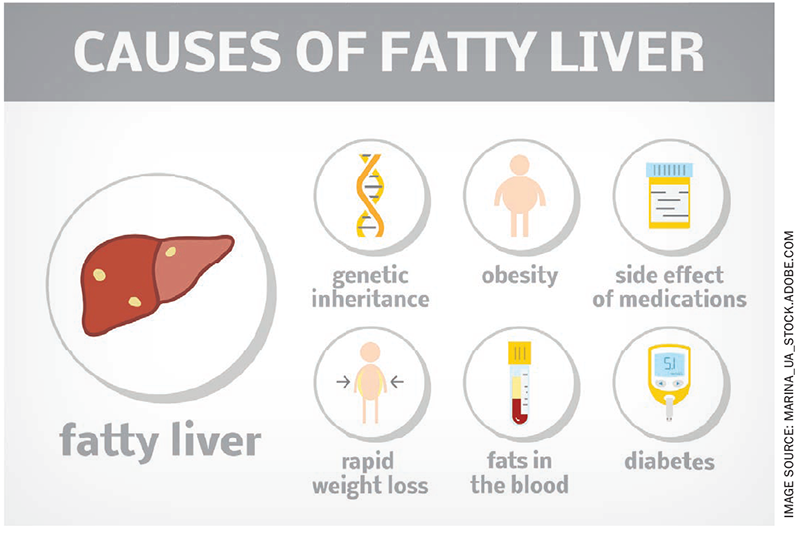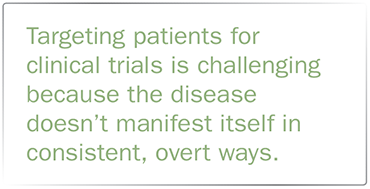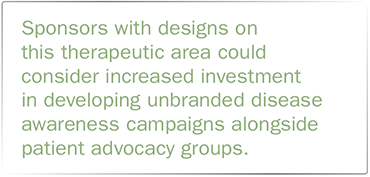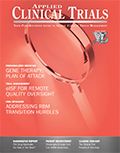Challenges Emerge from Low NASH Awareness
Applied Clinical Trials
Addressing the current hurdles and potential solutions in nonalcoholic steatohepatitis awareness and clinical trial enrollment.

Nonalcoholic steatohepatitis (NASH) is a form of nonalcoholic fatty liver disease (NAFLD) that remains largely unknown among the adult population in the U.S. In the coming years, however, the prevalence of this potentially deadly disease, which can lead to cirrhosis and even liver cancer, is expected to grow significantly. According to a 2018 study,2 instances of NASH in the U.S. are expected to increase 63% from 16.52 million to 27 million cases by 2030.
The complications associated with NASH include cirrhosis and liver cancer, with an increased chance of dying from liver-related causes. According to the National Institute of Diabetes and Digestive and Kidney Diseases (NIDDK3), studies have shown that people with NAFLD have a greater chance of developing cardiovascular disease-the most common cause of death among people with NAFLD or NASH.
To highlight the seriousness of NASH, there currently exists no FDA-approved therapy to treat the disease. In the next five years, more than 60 sponsors4 will attempt to randomize nearly 30,000 NASH patients into clinical trials. So pharmaceutical companies face an uphill battle to both increase awareness of this disease and enroll tens of thousands of patients in NASH clinical trials.

Low awareness of NASH
Of all of the challenges that sponsors face in enrolling patients into NASH studies, the biggest is lack of awareness of the disease, even among patients most at-risk-those with type 2 diabetes, obesity, and hypertension.
Continuum Clinical conducted a survey of 1,014 adults in the U.S. and found only 2% were aware of NASH. A follow-up study of 450 adults with comorbidities associated with NASH revealed only 6% were aware of the disease.
Continuum also found that 48% of at-risk Hispanic/Latino respondents were most concerned about liver disease versus 32% of the total population surveyed. In addition, Hispanic/Latino respondents were significantly more interested in learning about a hypothetical NASH clinical research study (62% versus 49% of the total population).
Other barriers to enrollment
In addition to low awareness of NASH, targeting patients for clinical trials is challenging because the disease doesn’t manifest itself in consistent, overt ways. Many times, patients with NASH are asymptomatic.

It’s estimated that as many as 30 million Americans currently have NASH, but only 180,000 have been diagnosed. Given the average participation rate in clinical trials is around 15% of a given diagnosed population-and coupled with an 80% screen/fail rate in this condition-that means the 180,000 patients will translate into only 3,000 randomizations.
The FDA currently requires sponsor protocols to confirm patients’ NASH diagnosis via an invasive and potentially dangerous liver biopsy.
What can be done?
In order for progress to be made against this disease, pharmaceutical companies must find solutions to some of the problems posed earlier. Where are these organizations begin? How does a drug company reach out to consumers who aren’t aware of a disease that they may or may not have to enroll in a clinical trial that requires a liver biopsy for a diagnosis?
The FDA issued a guidance5 in December, which urges the pharmaceutical industry to develop/validate better biomarkers for NASH diagnosis and progression. In many regards, getting over the biopsy hurdle rivals the lack of general awareness of NASH, which is why we believe it is important for pharmaceutical organizations to invest in innovations (e.g., a variety of imaging techniques) to allay this patient burden, and subsequently persuade the FDA with strong data to accept those innovations as suitable endpoint markers for clinical trials. To that end, many researchers are investigating such biomarkers that will be as predictive, if not more so, than invasive liver biopsies.1
This long-term solution doesn’t help the number of trials that are enrolling today, however. Addressing the gap between the diagnosed patient population and the number of patients who will be needed to fill these trials requires implementing a robust patient recruitment program.

Sponsors with designs on this therapeutic area could consider increased investment in developing unbranded disease awareness campaigns alongside patient advocacy groups; the National Liver Foundation has begun to implement such an educational campaign on its own. In addition to these education efforts, incorporating fundamental disease education into clinical trial recruitment outreach materials is critical. This is unusual but not unheard of-Continuum has in the past successfully included institutional review board (IRB)-approved education information for an unaware patient audience for a different chronic disease campaign.
In conjunction with a broad-based disease education plan, smart web development-for example, a site that funnels disease-aware or diagnosed patients to a different landing page than unaware or undiagnosed patients-will be necessary to motivate potential patients to complete study screening.
Specific to this are materials that target patient demographics that are disproportionately affected by NASH or NAFLD, such as Hispanic and Latino patients. Directly engaging patients locally through educational and community events is critical to connect with those individuals both before and after diagnosis. Community-level engagement, especially important to populations typically underrepresented in clinical research, will ensure NASH patients receive education and information at the right time in their journey and can make recruitment campaigns more effective.
Despite the potentially enormous patient population, the challenges industry will face in enrolling clinical trials are daunting and unique. NASH patients are diverse, both ethnically and in their diagnostic pathway. The only way to successfully achieve the required trial enrollment numbers is to be strategic, creative, and thorough in planning both for recruitment and retention.
References
- Li Q, Dhyani M, Grajo JR, Sirlin C, Samir AE. Current status of imaging in nonalcoholic fatty liver disease. World J Hepatol. 2018 Aug 27; 10(8): 530-542.
- https://www.ncbi.nlm.nih.gov/pmc/articles/PMC5767767/
- https://www.niddk.nih.gov/health-information/liver-disease/nafld-nash/definition-facts
- https://clinicaltrials.gov/ct2/results?cond=NASH&term=&type=Intr&rslt=&recrs=b&recrs=a&recrs=d&age_v=&age=1&gndr=&intr=&titles=&outc=&spons=&lead=&id=&cntry=&state=&city=&dist=&locn=&phase=1&phase=2&fund=2&strd_s=&strd_e=&prcd_s=&prcd_e=&sfpd_s=&sfpd_e=&lupd_s=&lupd_e=&sort=
- https://www.raps.org/news-and-articles/news-articles/2018/12/fda-issues-draft-guidance-on-nash-drug-development
Cathleen Dohrn, PhD, is the Senior Scientific Director, Continuum Clinical

Improving Relationships and Diversifying the Site Selection Process
April 17th 2025In this episode of the Applied Clinical Trials Podcast, Liz Beatty, co-founder and chief strategy officer, Inato, discusses a number of topics around site engagement including community-based sites, the role of technology in improving site/sponsor relationships, how increased operational costs are impacting the industry, and more.
Behind the Buzz: Why Clinical Research Leaders Flock to SCOPE Summit
February 7th 2025In this episode, we meet with Micah Lieberman, Executive Conference Director for SCOPE Summit (Summit for Clinical Ops Executives) at Cambridge Innovation Institute. We will dive deep into the critical role of collaboration within the clinical research ecosystem. How do we bring together diverse stakeholders—sponsors, CROs, clinical trial tech innovators, suppliers, patients, sites, advocacy organizations, investors, and non-profits—to share best practices in trial design, program planning, innovation, and clinical operations? We’ll explore why it’s vital for thought leaders to step beyond their own organizations and learn from others, exchanging ideas that drive advancements in clinical research. Additionally, we’ll discuss the pivotal role of scientific conferences like SCOPE Summit in fostering these essential connections and collaborations, helping shape the future of clinical trials. Join us as we uncover how collective wisdom and cross-industry partnerships are transforming the landscape of clinical research.
Landmark Phase III Trial Shows Keytruda Significantly Improves Event-Free Survival in LA-HNSCC
April 28th 2025Interim KEYNOTE-689 trial data show that perioperative Keytruda significantly lowers the risk of disease progression or recurrence in resectable, locally advanced head and neck squamous cell carcinoma, marking the first major clinical advance for this patient population in more than two decades.